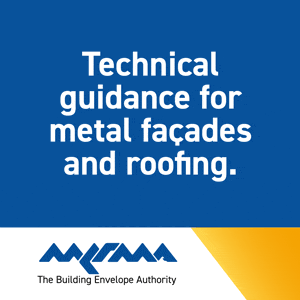Bridging the gap in fire and CO safety
- Specify & Build
- Aug 8
- 3 min read
Geraint Edwards from FireAngel explores how hybrid fire and carbon monoxide alarm systems, are helping to raise safety standards across all types of housing.
With the regulatory landscape evolving and expectations rising around domestic safety, specifiers and installers are under growing pressure to deliver systems that go beyond compliance to offer genuine protection. This growing pressure to improve safety outcomes is reinforced by recent figures from the Home Office, which highlight just how far there is still to go. In 2024, research showed that smoke alarms were present and raised the alarm in only 47% of dwelling fires. Even more concerning, in 29% of cases, the smoke alarms failed to operate or did not raise the alarm at all. These failures were often attributed to poor positioning, maintenance issues or the fire starting in a room without coverage. In total, 31% of fatalities in dwelling fires occurred in properties where a smoke alarm had raised the alarm, demonstrating that early detection alone is not always enough.

This data suggests that while alarm presence is important, it’s only part of the equation. For true effectiveness, alarm systems must be properly designed, installed, and interconnected to ensure that an alert in one room is heard throughout the property. Hybrid alarm networks, made up of wirelessly linked smoke, heat, and CO alarms, offer a scalable way to achieve this, even in domestic properties where full mains wiring may not be practical.
Hybrid systems enable both mains and battery-operated alarms to be wirelessly interlinked across a property, forming a cohesive, intelligent network. When any single device detects danger, whether it’s smoke, heat or carbon monoxide, all alarms sound simultaneously. This ensures occupants receive the earliest possible warning.
From an installation perspective, this offers significant advantages. Because devices communicate wirelessly, there is no need for disruptive rewiring, channelling or trunking. This makes hybrid systems particularly suitable for retrofit projects, social housing stock upgrades, private rentals and heritage properties where extensive electrical work is not feasible. For contractors, the reduced installation time translates into more efficient job scheduling and a lower likelihood of return visits, while ensuring maximum protection.
Importantly, hybrid systems also provide flexibility to tailor protection to the needs of the occupants. Additional alarms can be added to support changes in risk levels, for example, if an elderly relative moves in or if part of the property is converted into rental accommodation. By selecting alarms that support connected technologies, installers can futureproof the system, offering landlords and property managers remote monitoring capabilities through gateways and apps.
The ability to remotely monitor alarm status in real time is another critical advantage of connected hybrid systems. Landlords, housing providers and family members can be alerted instantly if an alarm activates, or if a device is tampered with or fails to test properly. This enables a faster emergency response and supports compliance with fire safety regulations by creating a clear audit trail.
With smoke alarm failure contributing to a significant number of dwelling fires, the case for more proactive and intelligent alarm systems is stronger than ever. Passive alarms that rely on occupant action or awareness are no longer sufficient in many domestic settings, particularly when dealing with vulnerable individuals, such as those living with cognitive impairments or mobility challenges. Hybrid alarm systems also represent a step towards smarter, more integrated homes. As consumer expectations rise around connected technology, systems that can interact with wider smart home infrastructure are increasingly seen as desirable.
While regulations vary across the UK, the trend is unmistakable: interlinked, multi-sensor alarm systems are becoming the benchmark for best practice. Whether driven by compliance, tenant demands, or a commitment to delivering high-quality outcomes, hybrid systems aren’t just a technical upgrade, they’re a strategic decision that improves safety, simplifies installation, and equips properties for the evolving needs of modern living.
.png)























































.png)

